For the past couple of months, I have been warning of three things. The first is that this business cycle is not like any other. It is on amphetamines, speeded up, on fast forward if you prefer. In one year we’ve had a growth shock, stock crash, massive stimulus, stock crash up and tech bubble, goods inventory cycle, tech bubble, gold and US dollar pump and dump, commodities “supercycle”, and now bond back-up with tech stock crash. This is literally ten years’ worth of market action in one year.
The second factor I have been warning about is that because the US is exiting the pandemic faster and with much greater tailwinds than Europe, the US dollar cycle is also atypical. The dollar index (DXY) always drops and drives global reflation when the Fed eases. However, this time, the US has vaccine and fiscal advantages that mean its growth, inflation and yield advantage is developing much earlier than usual in the cycle, meaning what is typically an enduring USD liquidity regime is turning to a rising DXY much sooner.
The third warning I have been making is that China will begin to slow in H2 as falling credit growth comes to bear.
These three factors have very important implications for the so-called and much-spruiked return of the commodities “supercycle” which has been driving the Australian dollar wild.
Let’s run through some charts. DXY launched on Friday night:
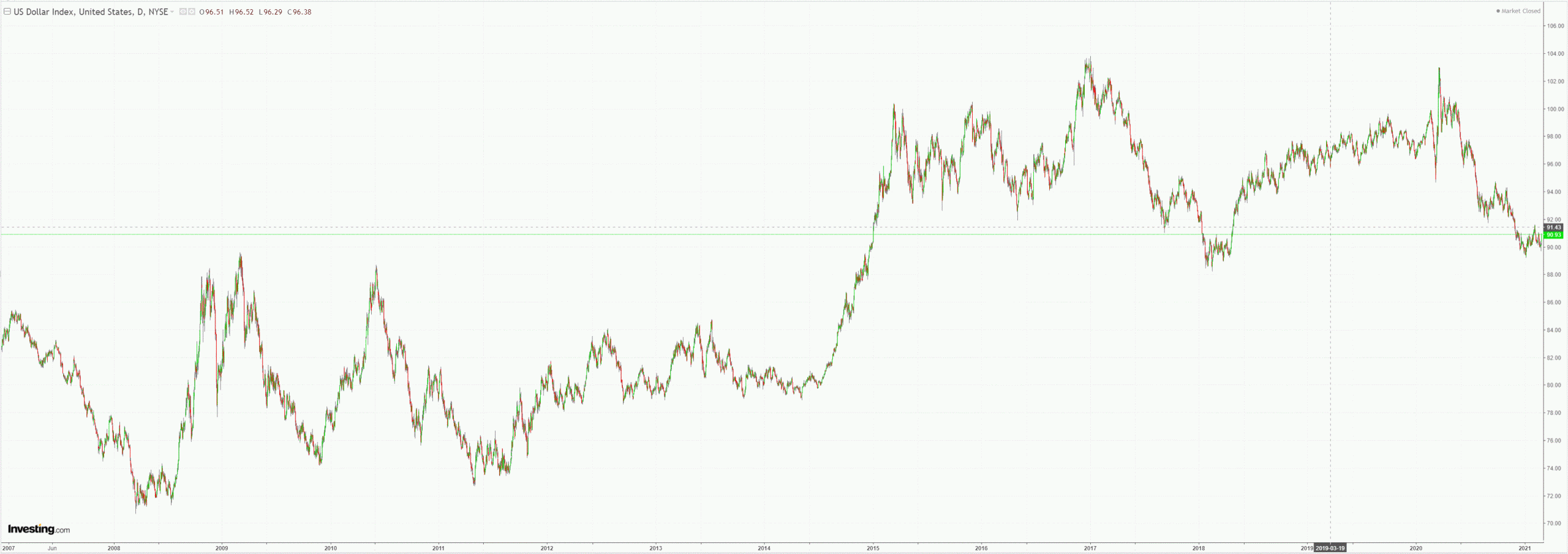
The Australian dollar was slaughtered:
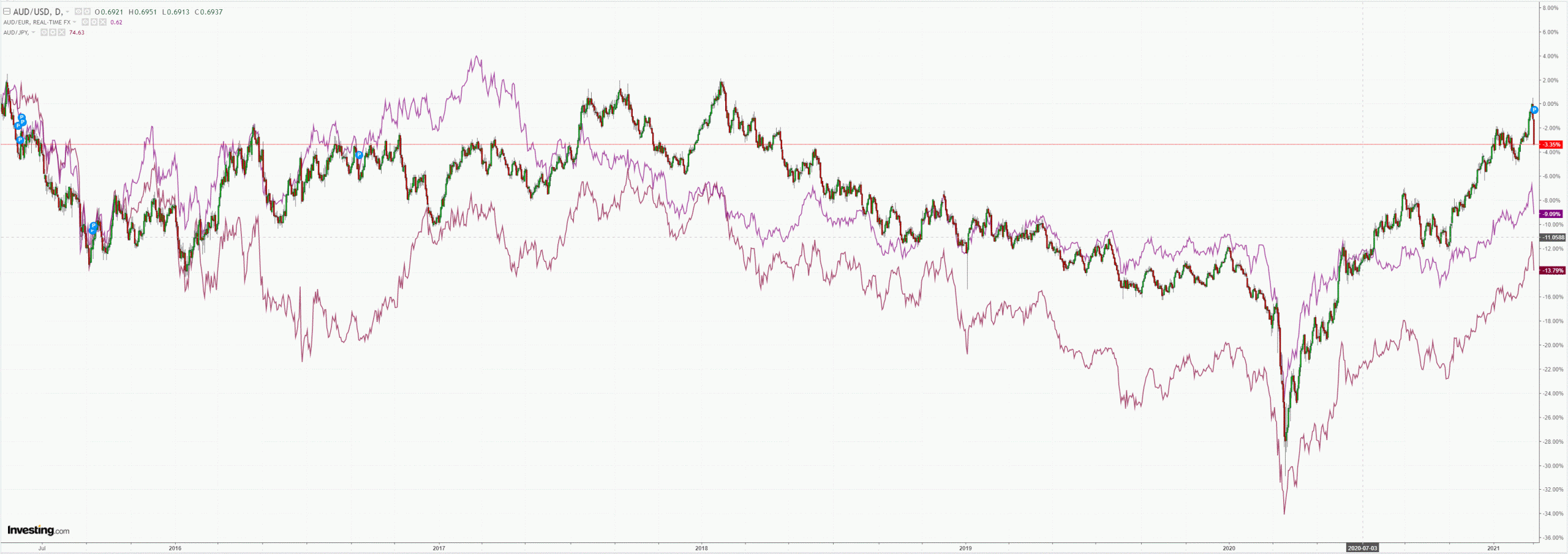
Oil and gold tanked:
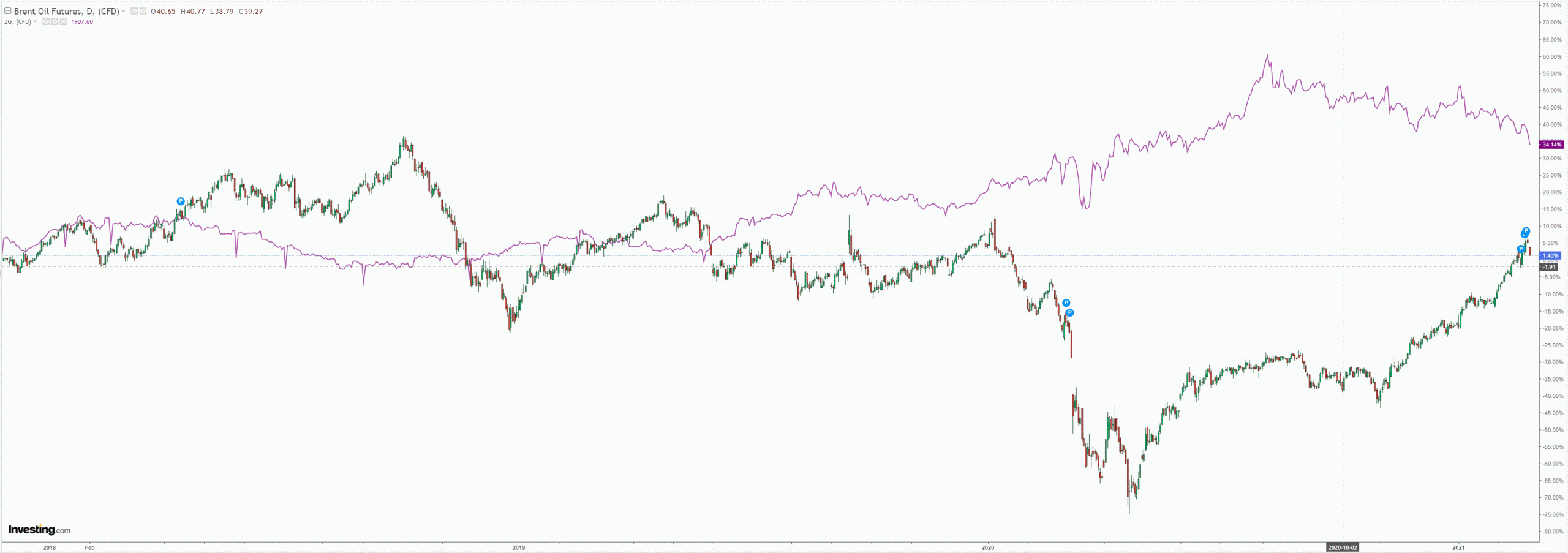
Base metals bath of blood:
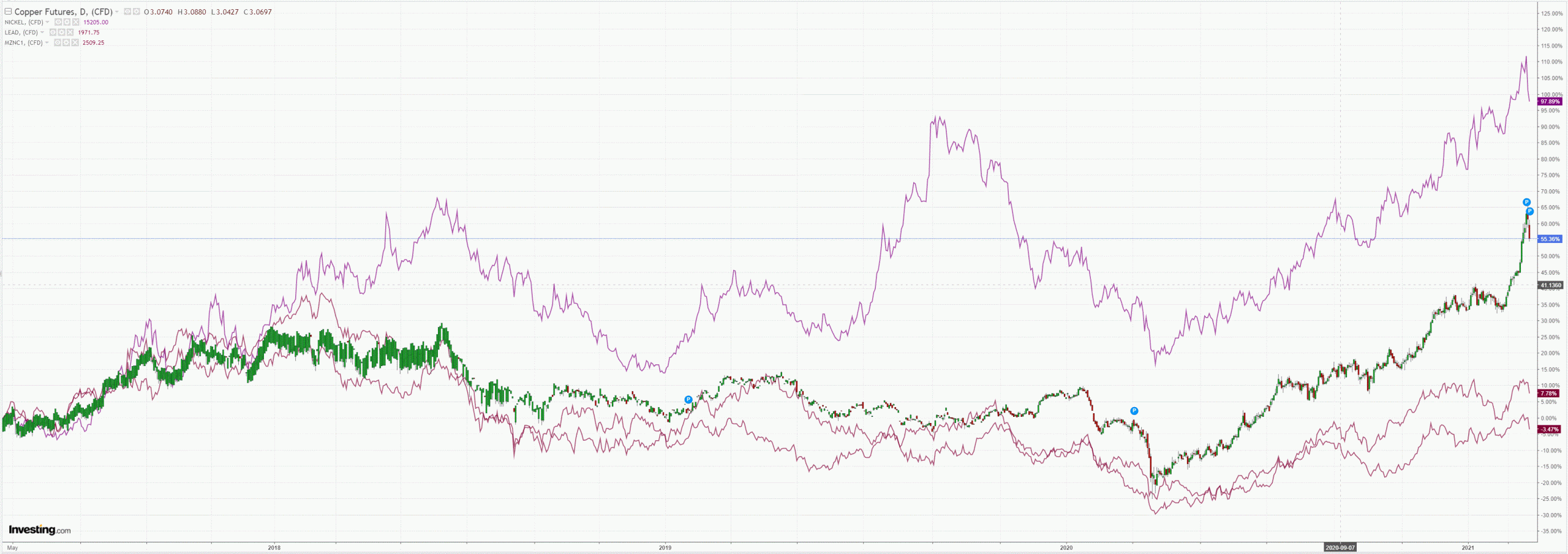
Big miners did a bit better:
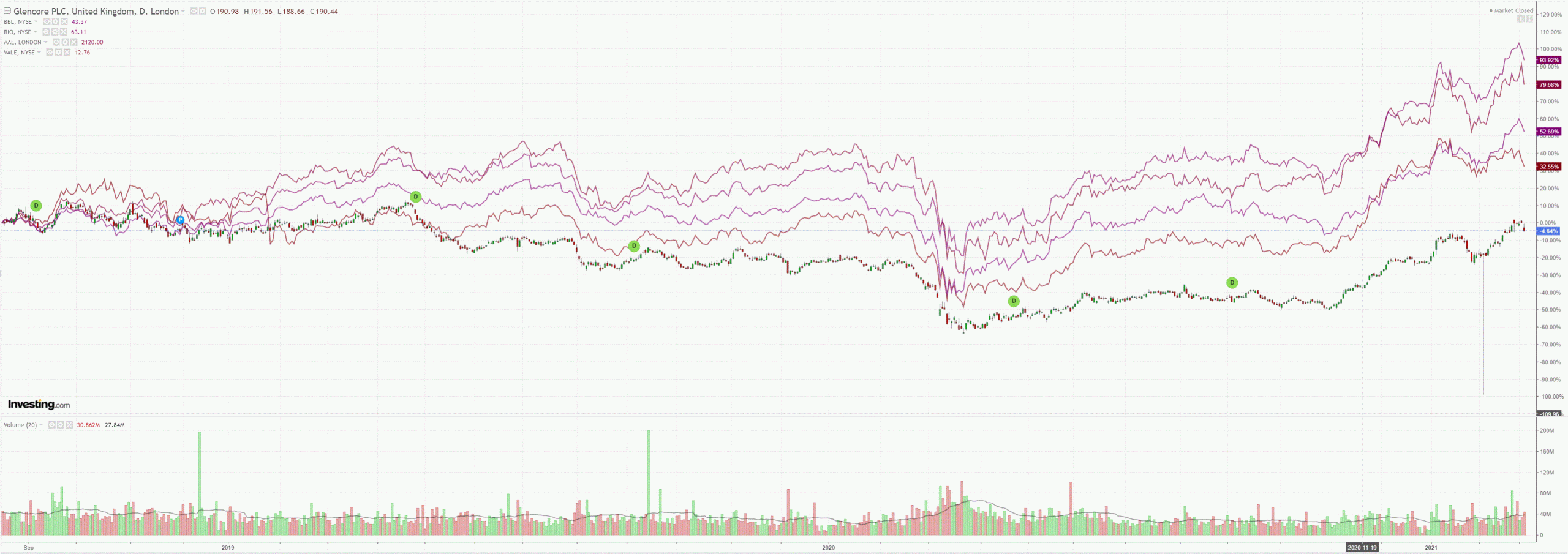
EM stocks look like a jumper with one foot off the edge:
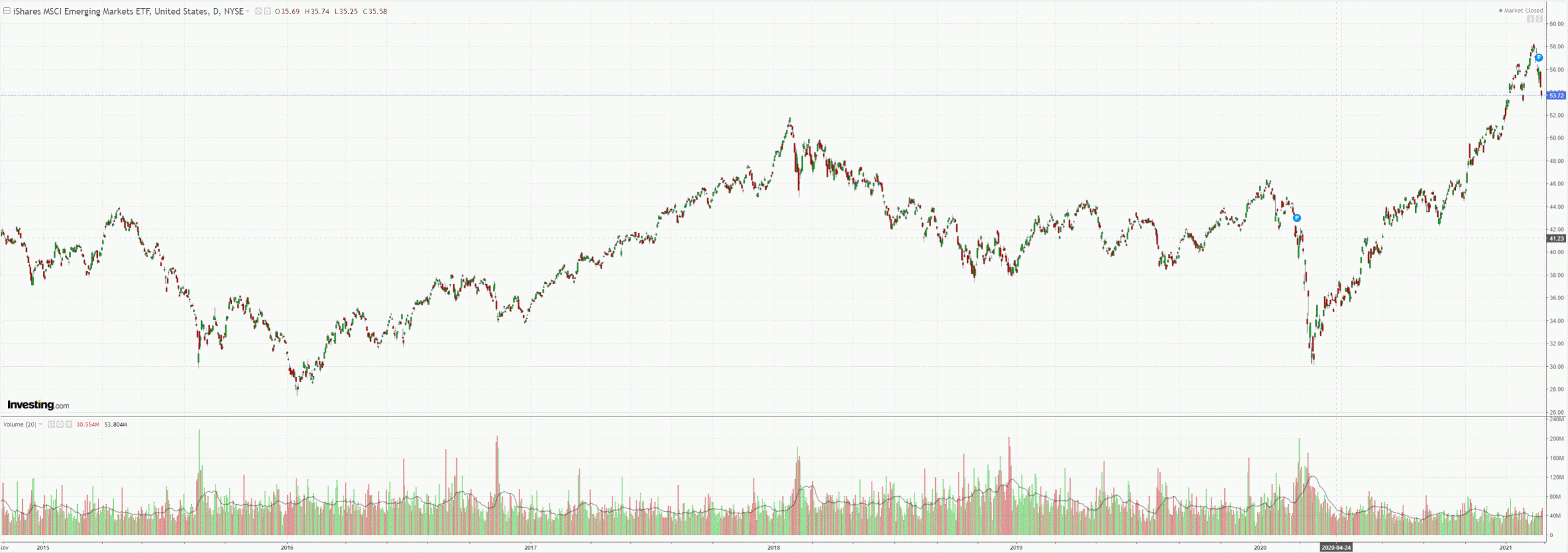
For anyone arguing that the Fed has lost control of the bond market, please explain why junk spreads are so very, very imperturbed:
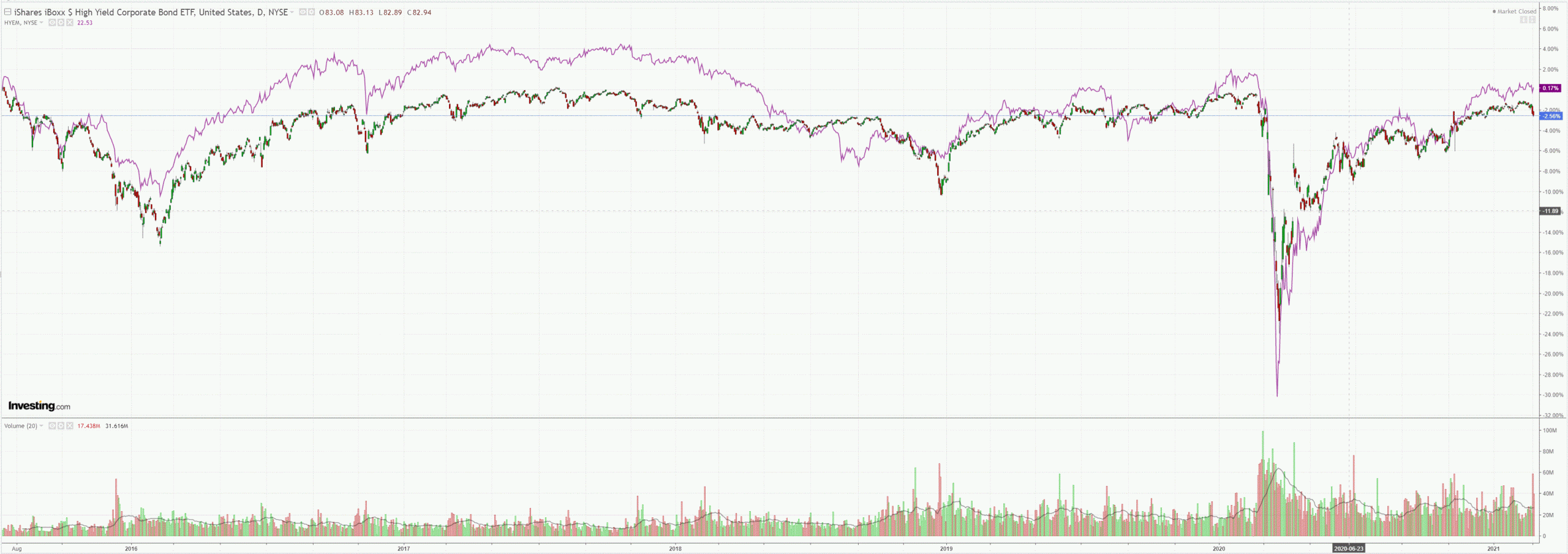
US yields fell:
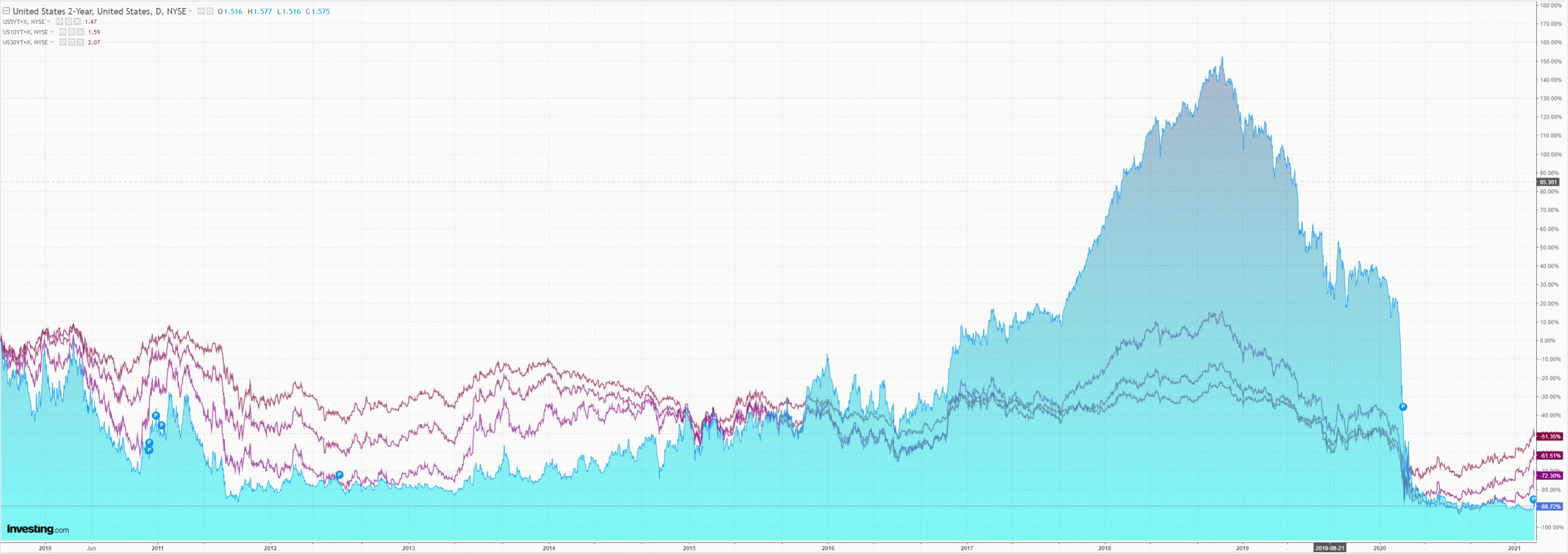
Stocks were mixed:
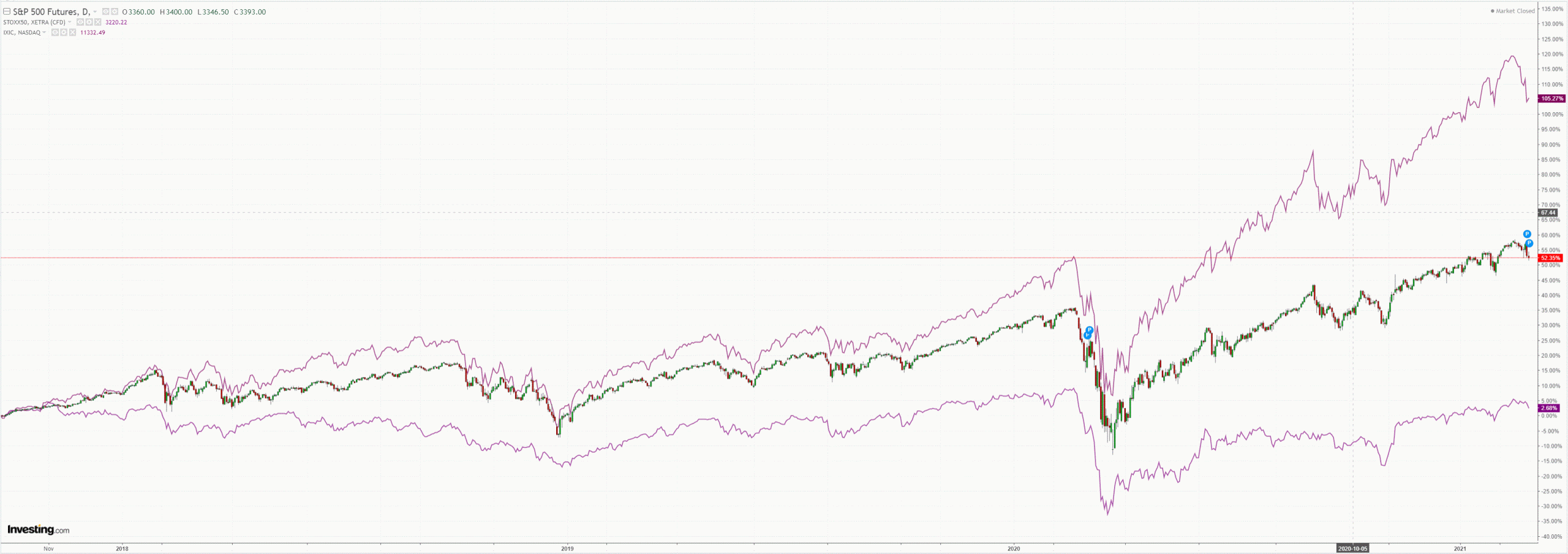
Friday night’s AUD action was my first two warnings manifest. The prospect of US outperformance in growth, inflation and yields has unleashed a new “taper tantrum” that crushed the commodities trade, unwound the EM bid in a panic and trashed the AUD.
A good comparison for what comes next is the 2013 “taper tantrum”. Notice that that episode lasted 6-9 months. Short-end yields spiked then consolidated before griding much higher. By comparison, long-end yields spiked, ground higher, then fell away as markets fretted that FOMC tightening would end the business cycle. This was only disrupted by the arrival of Donald Trump and his unorthodox proto-MMT tax cuts for the rich in 2016. Even so, it did end in breaking equity markets as the yield curve inverted, forcing the FOMC into a new easing cycle at the end of 2018.
Likewise, DXY spiked, consolidated for six months then took off.
In short, the new taper tantrum is not the end of the business cycle. But it is the turning point for a higher DXY and that is the beginning of the end for commodity prices and the AUD rally.
Once the third shoe of a slowing China drops in the second half then the DXY will also have to contend with a falling CNY and EUR:
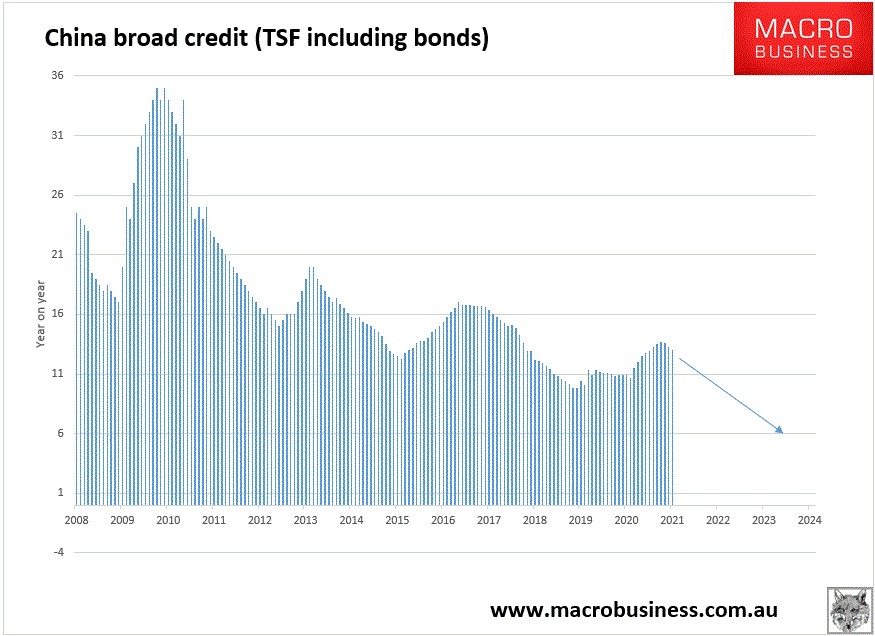
For commodity markets, 2022 is going to look more like 2015 than either 2007 or 2010, taking the AUD down with them.
Last week was a taste of what’s to come.

